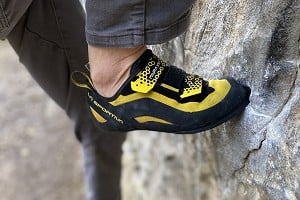
It's been four years since we published our last Performance Rock Shoe Group Test and looking back it's clear a whole lot has changed, not least in the number of offerings out there. As a result of this, we chose to rein in our criteria from outright 'performance', which is far too general, to something much more specific in the form of down-turned/stiff performance rock shoes designed more for hard sport, bouldering, and even trad rather than indoor comp-style boulder problems. These are shoes that will take you from 7s to 8s and - if you're strong enough - 8s to 9s.
What is performance?
That's a good question, because 'performance' is very much down to the individual - one person's warm up can be another person's lifetime achievement.
However, a point has to be drawn somewhere, and for the purposed of this review we're drawing it around the Font/French 7A mark. It's a lot harder to be objective about trad, mostly because trad is highly subjective. That said, you know when you've got performance in mind and hopefully - assuming your aims match the focus of the boot in question - we should be able to help with narrowing down the choices.
Focus
The criteria for this review was something that is down-turned, supportive, and with a good edge. The reasoning behind this was that for 99% of British sport climbing an edge is what you'll be after - just look at Malham, LPT, or Portland. In bouldering the lines get a little blurrier, as you're not on your feet for quite so long - hence the need for support is diminished somewhat. This isn't to say that you don't need some degree of support, it's just that the midsole may not need to be quite so supportive. When it comes to trad, you need both a supportive midsole and a supportive forefoot, because otherwise your feet are going to get tired whilst standing on those small edges.
In short, there's a whole load of highly specialist shoes out there, each for a very specific discipline/angle/gradient/style and to put them all side by side is near enough impossible; however, we've set out our criteria and this is very much what we'll be judging the shoes by.
Forefoot
Today's shoes might be getting softer and softer, but a lot of rock in the UK requires a good edge. Obviously the softer the shoe, the less supportive it is, so what it means is that a whole lot of rock shoe development hasn't actually been that appropriate for what we've got in British Isles. Take Portland, Malham, or LPT as an example: each of these venues favours a rock shoe with a little more support over a shoe with a little bit of extra sensitivity. Obviously you need a blend of the two, but what we're saying is that to use an edge you need a bit of support. Just to re-emphasise, we'll be scoring accordingly, as within the confines of this review a stiffer forefoot is a good forefoot.
Midsole
To a certain extent the midsole has a part to play in the shoe's edging capacity too; however, you can get shoes with a stiff forefoot that can (as a result) have a good edge, but have a soft midsole - hence it's difficult to transfer the power fully throughout the rest of your foot. As such, if you've got a more supportive midsole you should, in theory, be able to edge that little bit better - particularly if you've got quite weak toes.
Uppers
Uppers vary in composition. Some brands favour synthetic fabrics due to their low-stretch nature, which helps to maintain shape over the course of a shoe's lifespan. Others prefer natural fabrics such as suede, because it gives a little over time, becoming that bit more comfortable, and moulding to the user's foot. Each has downsides: synthetics get quite warm and (potentially) quite smelly, whilst suede can leach colour into your feet from the dyes used and - in some cases - give a little too much, eventually bagging out and losing performance as a result.
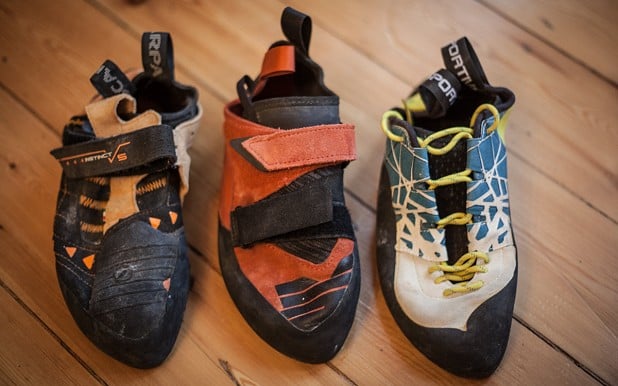
Fit
Is it narrow or wide, high volume or low volume, pointed or rounded at the toe? At the end of the day all other factors pale into insignificance if the boot doesn't fit. As always, we'd strongly recommend trying multiple pairs before you buy, then when you do find a pair that works buy a lot of them!
Men's and Women's vs. High Volume and Low Volume
There's probably a larger article that could be written about this, but we've tried to make known (where appropriate) the availability of Men's and Women's and/or High and Low Volume versions, plus any further differences between the models.
Rubber
Rubber differs in several ways, but as a sweeping generalisation a harder compound will be better at edging, whereas a softer compound will be better at smearing. On the models in this review a range of rubbers have been used, with Vibram having become something of an industry standard in recent years: XS Edge representing the sterner compound, XS Grip representing the soft.
Best in Test
The observant will notice that we haven't awarded a 'Best in Test', which comes down to the simple fact that there's no single rock shoe to rule them all - it all comes down to fit and intended use. With that in mind, even our Highly Recommended should be taken with a pinch of salt, as great though this accolade is if they don't fit they're not going to be the right shoes for you. Even with performance climbing shoes comfort is key...
Overall summary
|
Make and model |
Ratings | |
|
Boreal Price: £120 Focus: Profile/Fit: Women's Fit / Low Volume:
|
Stiffness/Support Edge
Sensitivity
Overall
|
|
|
La Sportiva Price: £140 Focus: Sport/Trad Profile/Fit: Low Volume and Narrow/Regular Width Women's Fit / Low Volume - Yes
|
|
Stiffness/Support Edge
Sensitivity
Overall
|
|
Red Chili Price: £120 Focus: Boulder/Sport Profile/Fit: High Volume / Wide Women's Fit / Low Volume - Yes
|
Stiffness/Support Edge
Sensitivity
Overall
|
|
|
Evolv Price: £140 Focus: Boulder/Sport Profile/Fit: Medium Volume, Medium - Wide Women's Fit / Low Volume - No
|
|
Stiffness/Support Edge
Sensitivity
Overall
|
|
Five Ten Price: £100 Focus: Boulder/Sport Profile/Fit: Medium-Wide / Narrow Heel Women's Fit / Low Volume: Yes |
|
Stiffness/Support Edge
Sensitivity
Overall
|
|
Tenaya Price: £100 Focus: Boulder/Sport Profile/Fit: Narrow / Low Volume / Medium Heel Women's Fit / Low Volume: No, but the Oasi - which is available in both men's and women's - would be worth considering
|
Stiffness/Support Edge
Sensitivity
Overall
|
|
|
Ocun Price: £100 Focus: Sport/Trad Profile/Fit: Wide & Really Wide! Women's Fit / Low Volume: Ozone Plus = High Volume |
Stiffness/Support Edge
Sensitivity
Overall
|
|
|
Scarpa Price: £130 Focus: Boulder/Sport/Trad Profile/Fit: Medium Volume / Medium/Wide Width Women's Fit / Low Volume: Women's version available 2019 |
|
Stiffness/Support Edge
Sensitivity
Overall
|
|
Black Diamond Price: £130 Focus: Sport/Trad Profile/Fit: Medium-High Volume / Medium/Wide Width Women's Fit / Low Volume: Yes |
|
Stiffness/Support Edge
Sensitivity
Overall
|
Boreal Dharma - £120
The Dharma has been re-designed for 2018. It's an aggressively down-turned asymmetric shoe which is designed for steep sport, bouldering and trad. It strikes a nice balance of edging power in combination with the softness and flexibility found in a lot of state of the art performance shoes. State of the art is a good phrase to describe the Dharmas - the shape, materials and look all combine to give a shoe which is obviously designed for the steepest and hardest routes and problems.
Forefoot
The Dharmas feature a half-length forefoot sole which is moulded rather than being cut from a flat sheet (as you'd expect with most rock shoes) which means the shoe (or at least the forefoot!) holds its shape over time. The forefoot itself is stiff enough to give plenty of edging power and the aggressive angle of the big toe really forces your toes, and weight, into an optimal edging position. There is plenty of flexion in the arch of the shoe which again allows you transfer maximum power to the toe. In short the Dharma is an edging machine.
Midsole
The Boreal Dharma features a fairly stiff midsole although it does flex aggressively which is intensified by Boreal's Wrap Rand tension system. This extends the usual heel tension to the middle of the shoe to give an extra snug fit with - you guessed it - extra tension. This extra tension and flexion transfers lots of power to the toe and the heel.
However, what it doesn't provide is lots of support which results in a shoe which is excellent for edging over short periods of time on steep ground but which isn't as useful for edging on slabby, vertical or gently overhanging terrain for long periods of time. If you are trying to squeeze the most out of a tiny edge on a severely overhanging wall then you need to be able to transfer maximum power to the toe and a shoe which flexes a lot whilst maintaining a stiff forefoot allows you to do this. However if you're standing on small edges for a long period of time a shoe which is relatively stiff from the heel to the toe provides more support which is, firstly, more comfortable as your foot is not constantly bending, and secondly, means that power is provided to your toe from the whole of your foot in a flat position rather than from aggressive flexion.
Uppers
The Dharma is a velcro shoe with three straps to provide extra precision when tightening them. The two main straps are useful, however the middle strap seems to make only the slightest difference. Slightly annoyingly, the lower strap on the left shoe was almost too short to attach properly meaning that it would sometimes come undone.
There's a lovely big toe patch of rubber on top of the shoe which is great for toe-hooking, and this is made even better by the shape of the toe: a right-angle on the knuckle of the toe giving an almost 45 degree flat surface with which to toe-hook. This is excellent for toe-hooking flat surfaces and edges and will we imagine become a bit of a secret weapon on some boulder problems. An occasional issue is that as it's so prominent, sometimes when you're pumped looking down at your feet, desperately trying to accurately place your foot on a foothold, you mistake the 'knuckle-bump' from the apex of your big toe and misplace your foot - annoying but something that you can probably get used to. Additionally, as the profile of the front of the shoe is so high it can make it difficult to use in small pockets. Twisting your foot into a crack is also not possible and, due to the angle of your toe, painful.
The rest of the uppers feel plush and modern. The non-rubber upper is synthetic, which means it doesn't stretch much, and the lining is cotton-based which is again low-stretch and has a nice padded feel to it. The Dharma has a nice sock-like feel overall.
Fit
The Dharma is fairly high volume in the forefoot although it does have quite a specific shape which pinches laterally around the arches of the foot. The heel comes quite high up the back of the ankle and is snug, although there is a little space around the sides of my heel and the moulded heel cup adds unnatural depth and width to your heel (which isn't a bad thing necessarily). Another thing worth mentioning is that the 'knuckle bump' and shape of the toe forces your big toe into an extremely aggressive position, at least a 45 degree angle, and this can occasionally be uncomfortable. Due to these factors, plus the extreme flexibility of the shoe which means they don't provide much support, they aren't ideal for wearing for long periods of time (as you would expect from a high-end shoe such as this). Our reviewer takes an EU 45 street shoe and wore a 44 in the Dharmas (which, relative to other climbing shoes he wears, is large compared to street shoe size).
Men's & Women's / Low Volume & High Volume
A Women's model is available, featuring an adapted shape/last with a lower volume, slimmer fit and a narrower/low-cut ankle.
Rubber
This is quite a biggie for the Dharmas as they use 4mm of Boreal Zenith Pro rubber - Boreal's own compound - and as such differ from the other shoes on this test. The Zenith Pro rubber is quite soft, more similar to Vibram Grip than Vibram Edge, although this softness is perhaps exacerbated by the overall flex of the shoe. This is again another factor as to why the Zenith Pro are better on edges on steeper ground than long, vertical routes: a harder rubber gives more security and will fold less on edges whereas you almost want your rubber to give a bit at the edges on super steep ground to get the most out of them. The Zenith Pro rubber has proved perfectly sticky and it certainly feels on a level pegging with other similar rubbers. We haven't noticed much wear at all - certainly nothing unusual.
Summary:
The Dharma is a great shoe for steep climbing, whether that is sport or bouldering, and on this terrain they're an edging machine. They feel like a modern performance shoe: they're pretty soft, are very aggressive and asymmetric, and due to the tension and flexion, transfer massive power to the toe and to the heel. They're obviously designed for the hardest, steepest modern routes and in this respect they're the Ferrari of the climbing shoes: great when you want to whip out the big guns... but your reliable Volvo might actually be your preferred choice for everyday climbing.
For more info see borealoutdoor.com
La Sportiva Kataki - £140
The Kataki is best be described as a lace-up version of the Otaki in appearance (which we reviewed Nov 2016), but a Katana Lace in feel. It's an interesting hybrid that holds its own, with a stripped back and honest feel about it. There's no toe rubber, no fancy (and unnecessary) features: just an edging machine, pure and simple...
Forefoot
The Kataki features a 3/4 sole of Vibram XS Edge Rubber, which provides a level of support that is ideal for edging. The toe is tapered and pointed, which makes it particularly well suited towards pockets and thin cracks. It doesn't feature any form of toe patch/rubber, but that isn't really what the Kataki is about: it's designed with the vert in mind, not the overhangs, hence toe-hooking isn't really on the cards.
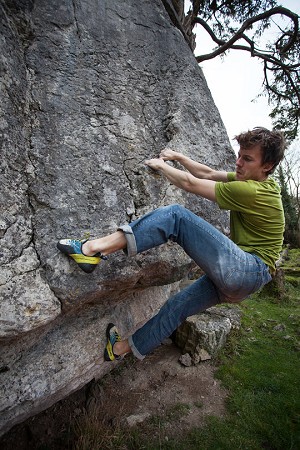
The P3 'Permanent Power Platform' provides the support between the back and front of the shoe. It's solid (1.1mm), robust, and most critically doesn't dig into the heel.
Uppers
The uppers are constructed using suede which gives a little, but not a lot. The tongue is constructed of a single, sweep-over design and is made from a soft neoprene-esque material.
Fit
The Kataki features a regular/narrow, low-volume forefoot alongside a similarly slimline heel. It's also worth mentioning that the heel features La Sportiva's patented 'S Heel' technology, which supposedly stops them from rolling quite as much whilst heel hooking; however, much like in the review of the Otaki/Skwama, we're really impressed with the heel as a whole, just not the overall benefit and effectiveness of the S Heel.
Size-wise the number bears little or no resemblance to actual size of the shoe, with you having to take around two European sizes off your street shoe size. The lacing extends a good way down the shoe, which enables an easily customisable fit.
Rubber
Unsurprisingly for an edging machine, the Kataki features tired and tested 4mm Vibram XS Edge rubber. Compared to XS Grip this provides much more support on small edges, with very little give or 'creep'. That said, it can be a bit more skittish in lower temperatures or on slopey footholds. Coupled with the stiffness of the Kataki as a whole, this isn't (at least out the box) a smearing shoe; however, with use they do soften up nicely, so don't write them off altogether - it'd make a great granite shoe when worn in!
Men's & Women's / Low Volume & High Volume
There is a Women's model available, but it's worth mentioning that the only thing to differentiate between that and this is the colour, the rubber (XS Grip 2 as opposed to XS Edge) and the tension of the rand - there are no further differences to size, width, or volume. That said, they do - as a result of the rubber/rand - have an altogether softer feel.
Summary
The Kataki is best suited towards vertical trad and sport, with a high degree of support that means you can easily use (and hopefully rest) on the smallest of edges. It's not the strongest within the bouldering category, but at this level of specialisation that's hardly surprising. For UK trad and sport, if the Kataki fits then it's definitely a strong contender.
For more info see lasportiva.com
Red Chili Voltage - £120
The Voltage has been a stalwart of the Red Chili range for several years now. Whilst it is asymmetrical and downturned, it's not extraordinarily so, being an interesting blend of performance and comfort.
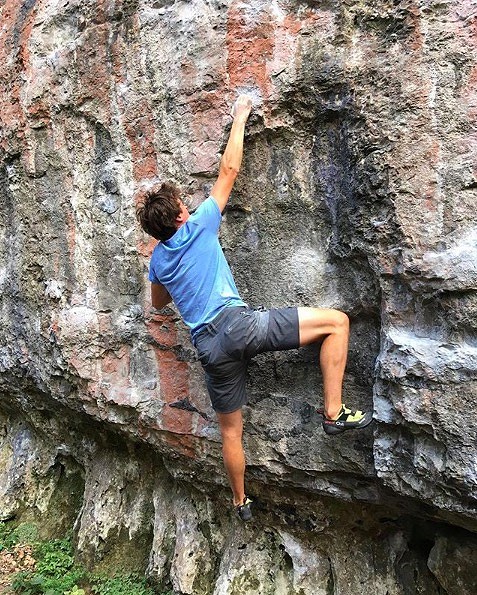
Forefoot
The sole is short underneath the forefoot - as opposed to a 3/4 length sole - and hence it's not that stiff or supportive, but is instead quite flexible and sensitive. Across the top of the toe there's a good amount of rubber sweeping over; however, it is of a smooth nature and can be prone to slipping on awkward or insecure toe-hooks.
Midsole
The midsole in the Voltage is similarly flexible, which again lends itself towards smearing, but is less beneficial for supporting your foot on those small edges. Coupled with the forefoot this really makes the Voltage a poor performer on the smaller edges, unless you happen to have an extraordinarily strong set of toes.
Uppers
Suede is used throughout the uppers, so bear this in mind whilst sizing up, as they can give up to a size when bought tight. In order to help ease your foot in, Red Chili have added a mesh lining to the mouth of the shoe, alongside a suede tab, which feels snug and secure - if a little basic.
Fit
The Voltage has a regular/wide last, with a roomy forefoot and relatively bulbous heel. It's worth mentioning that there is a specific LV - low volume - version available too. The twin straps provide a certain amount of opportunity for customisation, but really it comes down to whether or not the forefoot and heel fit you.
Rubber
The Voltage features Vibram XS Grip, which as the name suggests is a softer compound than Vibram XS Edge. As such it is much more ideal for the bouldering/steeper sport side of things, and not so good on - you guessed it - small edges on the vert.
Men's & Women's / Low Volume & High Volume
A Women's model is available with a completely different, and much lower volume last, which could be a good solution for those that find the Voltage too roomy in the forefoot. It also has a lower ankle cut and is available in a full size range from 2-12.
Summary
Due to the combination of a short sole, a soft midsole, and XS Grip the Voltage wouldn't be our first choice for trad or vertical sport. When the going gets steeper, be that bouldering indoors or out, or on an overhanging sport route, then the Voltage would feel a lot more at home.
For more info see redchiliclimbing.com
Evolv Oracle - £140
The Oracle is Evolv's flagship lace-up. With a downturned and asymmetrical last it is a shoe with performance in mind. For prolonged edging on vertical ground, it's not the stiffest or most supportive shoe in the review, but would be a good choice for bouldering or steeper routes.
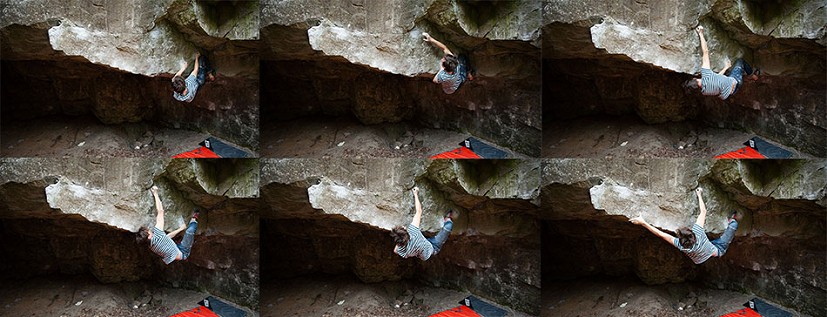
Forefoot
The Oracle's forefoot features Evolv's patented 'Love Bump', which aims to fill the dead space under your toes. This can feel a little peculiar, particularly if you're not used to it, but does act to hold your foot into a toe down position (and manages to do so relatively comfortably, pending the fit of the rest of the shoe). As a result of this, and the effect it has on your foot/toe geometry, they've made allowances to the top of the shoe, with a distinctly sculpted knuckle box.
Midsole
The support comes from a blend of the heel tensioner combined with the integrated lacing system. The result is that through tying the laces, the midsole is drawn upwards into the arch, which in turn provides a more stable platform from which to push off.
Uppers
The Oracle's uppers are constructed using a 'Synthratek' synthetic upper, which is vegan friendly, and gives a little, but not a lot. There's plenty of rubber around the toe, ideal for toe-hooking, but it is quite smooth - hence can (on some particularly awkward toe hooks) slip from time to time.
Fit
The Oracle features a medium/wide last at the forefoot and a similar sized heel cup. Size-wise we would recommend going around your high street shoe size, maybe going down a half size if you're looking for something serious. Due to the rubber around the toe, the lacing only goes to half way down the foot, but this doesn't seem to have a negative impact on fit or adjustment, as the speed lacing helps draw everything upwards and forwards.
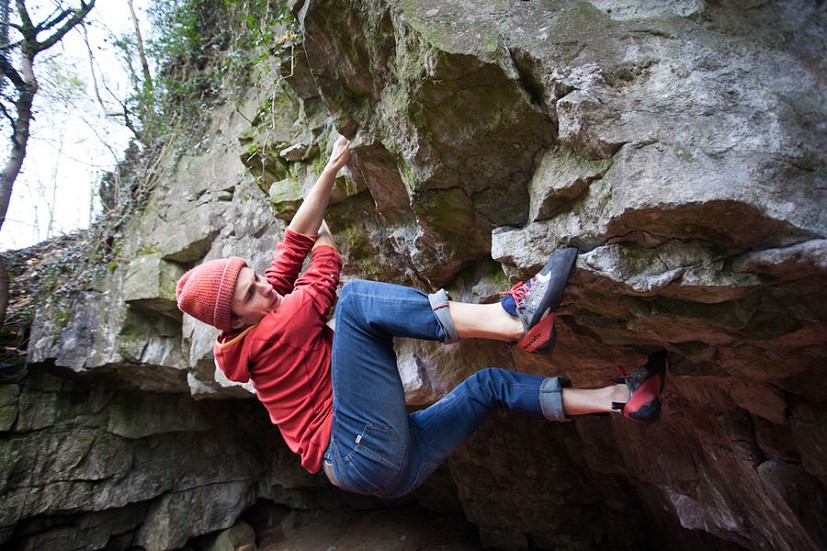
Rubber
SAS Trax is used throughout, which is Evolv's own blend of performance rubber, designed with friction in mind. We've found that it feels at the softer end of the spectrum, which is great for smearing and quick use of small footholds, but less ideal if you're standing on small edges for a period of time (such as when you're sport climbing). In these instances you can sometimes feel the rubber 'creep'. With this in mind, during the review period it became a shoe we used more for bouldering and quick redpoints on steeper - as opposed to more vertical - sport climbs. Trad, where you're standing around for quite a while, is understandably not where the Oracle's strengths lie.
Men's & Women's / Low Volume & High Volume
N/A
Summary
The Oracle is a hard shoe to fault, with a good fit, solid construction, and a nice feel. It is one of the most expensive on test though, which will undoubtedly be a consideration for some. Spec-wise it's probably best at bouldering/sport, insofar as the rubber and the midsole are both at the softer end of the spectrum - hence the shoe can give a little whilst tiptoeing around in them for any length of time.
For more info see evolvsports.com
Five Ten Hiangle - £100
The Five Ten Hiangle seem to be the last of a dying breed for the Adidas-owned company. In recent years they have been following the trend and making soft shoe after soft shoe, taking classic models and applying the indoor/competition style and softening them up enough to stand on a plastic volume. Fortunately, with the Hiangle, Five Ten are providing an alternative and offering a stiff, downturned boot. Whilst the shoe is perhaps not a specialist – it doesn't outperform other shoes in any area – it is a fantastic all-round option.
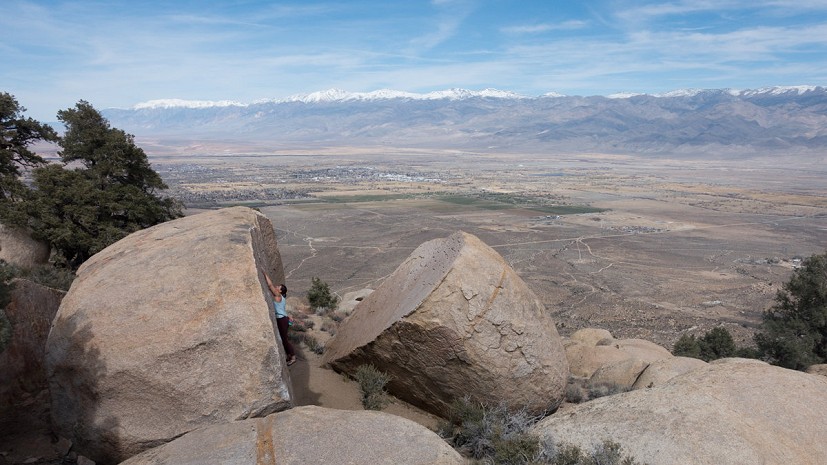
Forefoot
The forefoot is a classic Five Ten shape; a rounded toe box with low asymmetry. The knuckles of the toe are forced into a very upright and bunched position, giving the top of the forefoot a rounded shape. Whilst the top of the shoe does have a thin layer of rubber, the rounded shape of the shoe and the aggressive down-turned aspect means that it isn't great for toe-hooking – the angles are wrong.
The edge provides precision and the stiffness allows for quite a lot of support on the smallest edges - one caveat being that the rounded profile doesn't allow for much room when stepping through. The low asymmetry means the shoe isn't really designed for pockets, although it can hold its own on almost every rock type.
Midsole
The midsole is stiff and provides great support for the rest of the shoe. This makes the shoe a useful sport climbing tool, where you will be stood on small edges for a sustained period. As the shoe is worn in, the midsole does become more flexible whilst seeming to retain a deal of rigidity and support.
Uppers
The upper is unlined leather and Five Ten/Adidas do advertise that this means the shoe can stretch by half a size, which is worth bearing in mind when buying. There is a synthetic version out there for people wanting a non-leather alternative, however the boot is different enough that this review would be meaningless.
The shoe features one Velcro strap across the top of the shoe near the tongue. Perhaps two straps would be useful for when the shoe begins to bag out slightly, although this would mean a very different construction.
Fit
We've found that these shoes fit brilliantly. There is very minimal dead space and although the shoe's size does increase over time, it doesn't seem to be a big issue. Across the width of the foot the fit is snug, yet very comfortable after a few sessions. The shoe is reasonable high, leaving room for the stiffness to force your foot into a tensioned, downturned shape.
The heel is narrow and tight fitting which lends itself to precise heel hooks, although the precision does decrease over time.
Rubber
Not all boot rubber is created equal. Stealth C4 is the best of the best and you'll be at home on friction-dependent rock in the Hiangles. As previously mentioned, the shoe is pretty stiff out of the box, and the rubber makes the shoe perfect for small edges. It does soften up over time though and becomes more at home on smeary and friction-dependant terrain.
Men's & Women's / Low Volume & High Volume
The Hiangle comes in both men's and women's models. Both shoes are low volume, the women's is slightly smaller, as is the heel.
Summary
If you're after a very reasonably priced shoe that's aggressive and stiff, this is the one for you. At £100 it comes in quite a bit cheaper than some competitors. In terms of performance, the shoe is a decent all round and comfortable model. The versatility of stealth rubber, combined with the tight-fitting unlined leather upper, means that this shoe can tackle most things whilst remaining comfortable. It's not ideal for pockets but is suited to most other styles and rock types.
For more info see adidasoutdoor.com
Tenaya Iati - £100
The Iati is the 'enhanced' version of the Tenaya Oasi, famously worn by Alex Megos on some of the world's hardest sport climbs and boulder problems. The shoe is complicated; it blends a mixture of features that attempt to make the model comfortable and aggressive. The shape is asymmetric, forcing weight through the big toe, a design which feels at home on pocketed limestone.
Forefoot
As previously mentioned, the toe-box is highly pointed, meaning that a lot of weight is forced through the big toe. Out of the box, the forefoot is supportive and flexible making it ideal for a range of different styles from edging to smearing. Many users will be a big fans of this toe profile, although here it is intrinsically linked to other parts of the shoe which slightly let it down.
The top of the forefoot features a thin rubber toe patch and when combined with the flexibility of the toe-box, makes the boot quite useful for toe-hooking.
Midsole
The midsole features a stiff, curved strip of rubber which heavily emphasises the asymmetric shape. Due to the flexibility of the forefoot and the uppers (which we'll come to), the midsole doesn't provide much support to the rest of the shoe. What this means is that when on small footholds for a long time, your calf muscles become pumped a fair bit quicker than you'd expect with a more supportive boot. In practical terms, what this means is that the shoe performs better on overhanging terrain where less support in that area is needed.
Uppers
The Iati has quite a unique strapping mechanism for a climbing shoe, which we presume is there to provide micro-adjustments to the fit. Two straps attach to a Velcro closure system as shown in the photos below. In reality, the system is fiddly and there are bits of strap all over the place.
The tongue is a kind of baggy sock (for lack of a better word), which isn't as bad as it sounds. Although it could be streamlined for climbers with narrower feet, it does make the shoe comfortable around the top of the foot.
Fit
When new these shoes fit well, with one exception: the heel. Our reviewer does have narrow feet, but even considering this there is a lot of dead space in the heel on both sides of the foot. The shoe sits quite high on the Achilles, so it's unlikely to slip off on heel hooks but there is some unwanted movement and a lack of precision.
We've found there is a lot of dead space around the midsole too, particularly when your foot needs to be in a tensioned arch. This leaves your foot straining to compensate for the lack of tension due to the dead space.
Rubber
The sole is covered in Vibram XS Grip rubber, which explains the flexibility in the boot. The choice of rubber makes the shoe more at home on European pocketed limestone, than edgy limestone like you find in the UK. The shoe is far better on overhanging bouldering and sport climbing.
Men's & Women's / Low Volume & High Volume
As the Iati is relatively low volume itself, there is no low volume model of the shoe. For those craving an even lower volume desig,n the Oasi LV is probably the closest alternative.
Summary
The Iati fits into the category of 'better when new.' They're comfortable, precise and reasonably all-round at first. Once worn-in, the boot starts to bag out and become more flexible, and it fits more into the steep rock category than anything else. Perhaps not the best choice for your typical UK sport climbing.
For more info see tenaya.net
Ocun Ozone and Ozone Plus - £100
The Ocun Ozone is a moderately down-turned and moderately stiff shoe which suits a narrow foot, while the Ozone Plus is extremely similar in terms of performance but with a much wider fit. To give the most informative review two different reviewers have worn the Ozone and Ozone Plus and whilst we will talk about the Ozone in general there will be specific notes for the different fits of the Ozone and Ozone Plus.
Forefoot
The Ozone features a pointed toe-box which helps with edging, however due to it featuring a softer rubber it is also good at smearing. There is a good amount of flexion in the shoe which allows you to transfer your weight easily to the toe, which is great for both edging and smearing. The forefoot is not a particularly aggressive shape which makes it comfortable to wear over time.
Midsole
The Ozones have a fairly stiff midsole, particularly in comparison to most modern performance shoes and others in this test (stiffer, for example, than the Dharma). This is nice because it gives the shoe enough stiffness to edge well on a variety of terrain whilst providing enough support to be comfortable for long sessions. As such the Ozones are great for edging and smearing on slabs, vertical and gently overhanging ground although if you're looking for something to give you maximum power on super steep terrain you would want to look elsewhere.
Uppers
The uppers are made from Microfiber which, along with the additional rubber on top of the shoe from the 3 Force system (more detail below), explains why they don't stretch much. The upper is also a little thicker than expected which enables the velcro straps on the shoe to be really cranked tight without affecting comfort: ideal for getting a lovely snug fit. There is enough rubber over the toe for toe-hooking but the Ozone don't feature the plentiful upper rubber of other modern shoes. They have a leather insole and breathable tongue and as such they have been comfortable to wear for extended periods (read: not too hot and sweaty).
Fit (Ozone)
This is a narrow, low volume shoe - so much so that our reviewer found that initially there was some pressure at the sides of his feet where the rubber wraps around. However once broken in the Ozone has proven extremely comfortable, and despite providing excellent performance on a variety of rock and hold-types, it can easily be called an 'all day comfort' shoe. The fact that it has a fairly straight last contributes to this. The Ozone stretched a little less than half a size, so size them fairly generously. For reference, our reviewer is an EU 45 in street shoes and a 44 in the Ozones.
Fit (Ozone Plus)
Wide feet and technical shoes rarely go hand in hand (or hand in foot). There is always a compromise, whether that's a poor fit leading to poor performance or an agonizing redpoint attempt ending with failure. In addition to our reviewer having wide feet he also has Mortons/Greek toe whereby his second toe is longer than his big toe (a feature that is seen in up to 20% of the population). The Ocun Ozone Plus is the first climbing shoe he's worn that have been designed with this in mind, leading to a comfortable fit straight out of the box. A strong thumbs up for the Ozone Plus from a wide-footed climber!
Rubber
The Ozone and Ozone Plus feature 4mm of Vibram Grip rubber which is suitably sticky and helps to explain why, despite being a moderately stiff down-turned shoe, the Ozone is good at smearing as well as edging. Despite the Grip rather than Edge rubber the Ozones don't seem to roll on edges. The most interesting feature of the Ozone's construction is Ocun's '3 Force' system which involves wrapping rubber from the sole over the top of the foot to provide additional torsional stiffness as well as power to the toe. Whatever the reason, the Ozone certainly has enough tension and power in the toe!
Although the toe rubber has not worn unexpectedly there are a few areas in which the rubber is peeling away from the upper although not yet to the detriment of performance. Our Ozone Plus reviewer has also found one slight downside with his Vibram soles: as is often the case now, his shoes are engraved with the brand name. This engraving is right on the sweet spot of the toe, and although this makes little difference to performance we would have preferred it if the factory didn't allow this to happen.
Men's & Women's / Low Volume & High Volume
As we've already said, the Ozone is the low volume option, while the Ozone Plus suits high volume or wider feet.
Summary
The Ozones are an excellent 'jack of all trades' shoe. They're stiff enough for edging, have enough flex for smearing, and whilst they are really comfortable they fit precisely enough for heel hooks and other technical shenanigans. As such they're great for sport, trad and bouldering, and they're one of those shoes that you can chuck in your bag safe in the knowledge that, regardless of which crag you end up at, you'll have a pair that will perform well. For both of our Ozone reviewers this was their first pair of Ocun shoes; they were both highly impressed with the quality and performance, and would recommend them.
Our Plus reviewer went one step further: "For my feet these are the best shoes currently on the market. It really is heaven to be able to climb in a comfy pair of shoes (I didn't even take them off at the top off the crag to belay). If you suffer with wide feet and/or Mortons toe you owe it to yourself to give them a try - you may be pleasantly surprised."
For more info see ocun.com
Scarpa Instinct VS - £130
The Scarpa Instinct VS is a shoe with a cult following. Why? Because it works... Its design is simple, yet elegant, bringing the best of both worlds: a shoe with robust edging capabilities and the ability to smear. However, being the jack of all trades is difficult, so where - if anywhere - does the Instinct VS fall short?
Forefoot
The VS features a 2/3rds sole unit, which provides a good degree of balance between support and sensitivity. The toe has a healthy amount of rubber on the top, not to mention something that is quite rare for shoes in this review - ridges. These ridges definitely add a noticeable amount of grip to the VS whilst toe hooking, catching on crystals, edges, and rugosities where a smooth sided toe night not.
Midsole
The 'Bi-Tension' system runs all the way from the toe through to the heel, meaning - at least in theory - that you don't have to cram your feet into the smallest size possible to get a good level of power. Coupled with the 2/3rds sole throughout the forefoot it provides a good platform from which to edge securely, but at the same time enough suppleness to use the occasional smear.
Uppers
The Uppers are constructed of a synthetic suede and as such retain their size and shape well.
Fit
The VS features a medium/wide and medium-to-high-volume forefoot, and a similar heel. The single strap design would lead you to thinking that you might feel a little lacking in the way of security, but it certainly doesn't feel that way once they're on - something that comes down to the magic recipe Scarpa seem to have come up with.
Rubber
It will come as no surprise that Vibram's harder, edgier XS Edge is used throughout; however, it is worth mentioning that a Grip version is available courtesy of the Instinct VSR. This may be worth considering for lighter climbers, who may find the VS a little on the stiff side.
Men's & Women's / Low Volume & High Volume
A Women's version is due to land next year, so whilst there's nothing available currently there will be soon. The differences, we are told, will feature a narrower heel and lower volume, which - irrespective of gender - could be of interest to those who find the VS too roomy.
Summary
It's hard to find fault with the Instinct VS. It is one of the rare examples of a shoe that you could boulder in (both indoors and out), redpoint your hardest sport climb in, or head out for a day's trad mileage in. It can - and does - do everything very well. Were there to be a downside it would probably come down to whether or not they fit, because if you've got a narrow/low volume foot the chances are that they're not going to work.
For more info see scarpa.co.uk
Black Diamond Focus - £130
Black Diamond are relatively new to the climbing shoe market, so we were interested to see how the Focus performed. After opening the box one thing became quite apparent: these are, by some margin, the stiffest and most supportive shoes on review. What's more, when we first put them on they seemed comfortable, well made, and overall quite intriguing.
Forefoot
For a stiff shoe it's hardly surprising that the Focus has a supportive full length sole unit, which has a huge impact on the performance of the forefoot, by making it a very stable platform. Whilst there is some rubber on top, it's only superficial, and more cosmetic than it is useful for toe hooking.
Midsole
Whilst the midsole is deemed to be 'Medium Flex', it feels pretty 'Minimum-Flex' to us.
Uppers
The uppers are a blend of leather and BD's own 'Engineered Knit Technology'. The result is pretty low stretch, with very little give; however, due to the lack of heel tension it does mean that any give is felt in fit and performance (although this can be negated by tighter fastening). When it comes to fastening the Focus features two beefy velcro straps.
Fit
Despite the fact it claims to be quite asymmetrical and downturned it's definitely one of the more modest within the test. If anything, it's got quite a roomy feel to it. The foot slips in easily due to the wide opening, and due to the support coming primarily from the sole, there isn't a great deal of tension through the heel, which actually makes for a remarkably comfortable shoe. All day trad sessions here we come.
Rubber
The Focus features 4.3mm rubber, which is of a harder compound designed for - you guessed it - edging. Whilst there is some paint on rubber over the toe, this isn't a shoe to be toe-hooking in.
Men's & Women's / Low Volume & High Volume
A Women's model is also available. This is a lower volume than the Men's, which could be ideal - irrespective of gender - if you find the Focus a little roomy.
Summary
The Focus was a real unknown coming into the test, but continued to surprise us from the moment we put it on. If you're after an edge, look no further; if you're after sensitivity it's probably best to look elsewhere. Unashamedly focussed on the trad/sport climber who primarily climbs on vertical ground, this isn't a shoe for the boulderer (or those focussing on steeper ground), or - at least in our opinion - those operating at the top end, as the lack of sensitivity will be an issue.
For more info see blackdiamondequipment.com

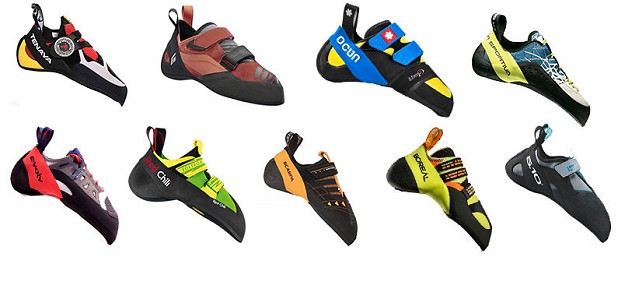
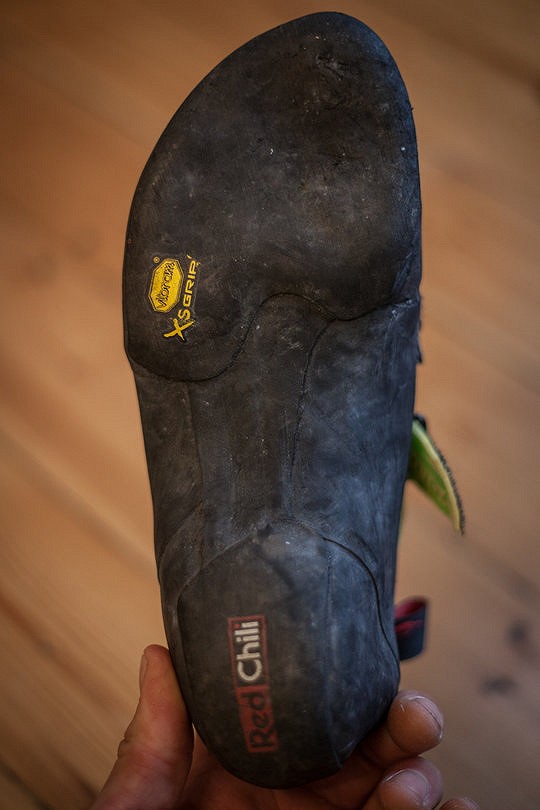
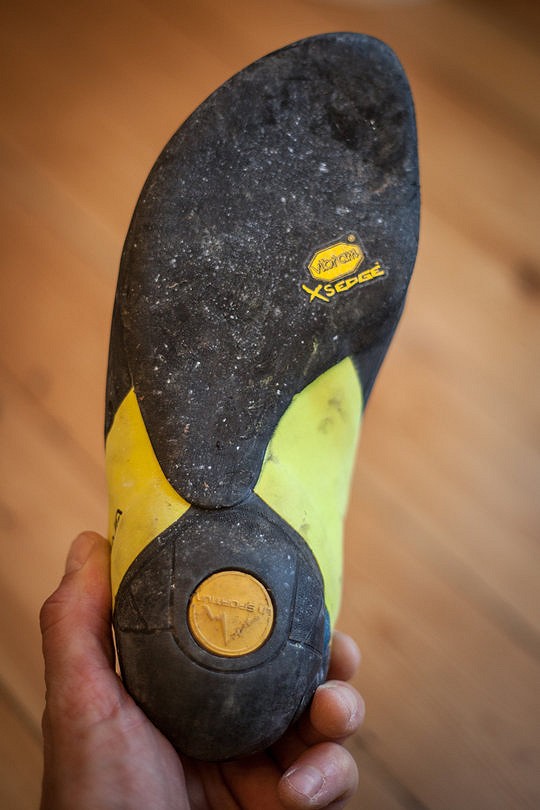
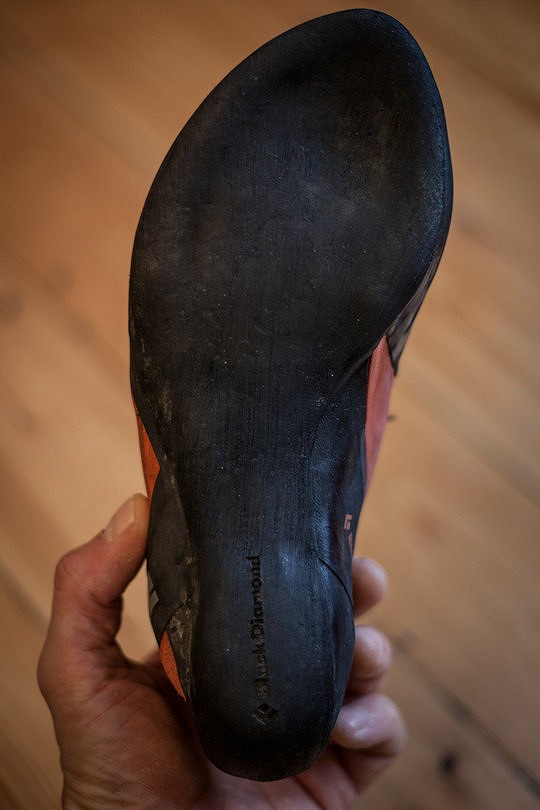
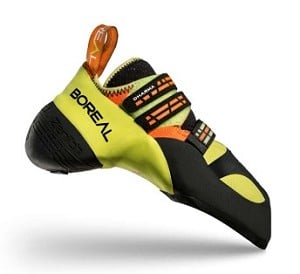
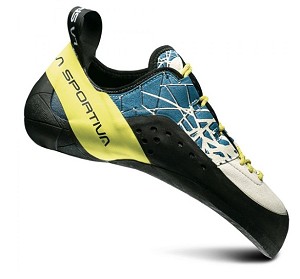

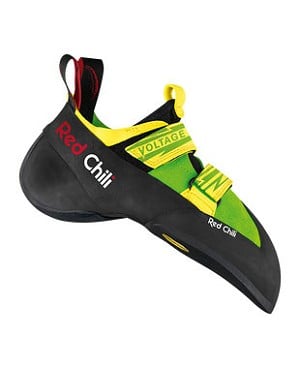
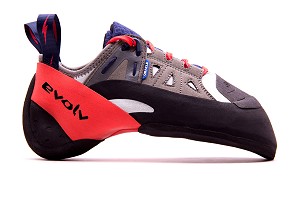
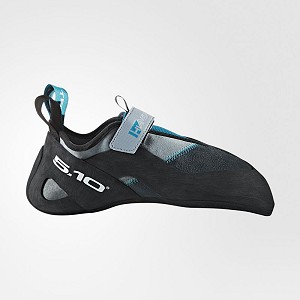
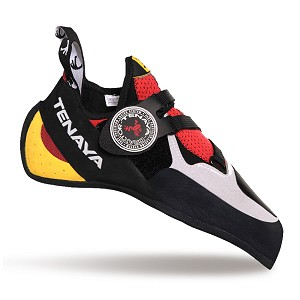
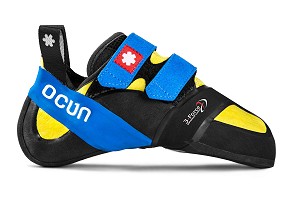
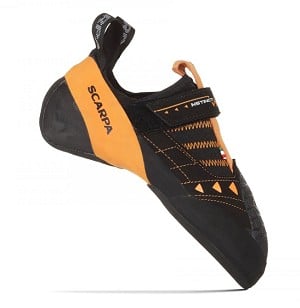
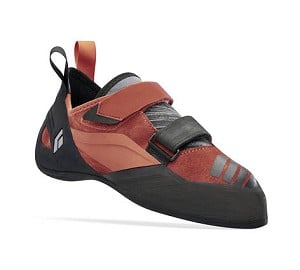
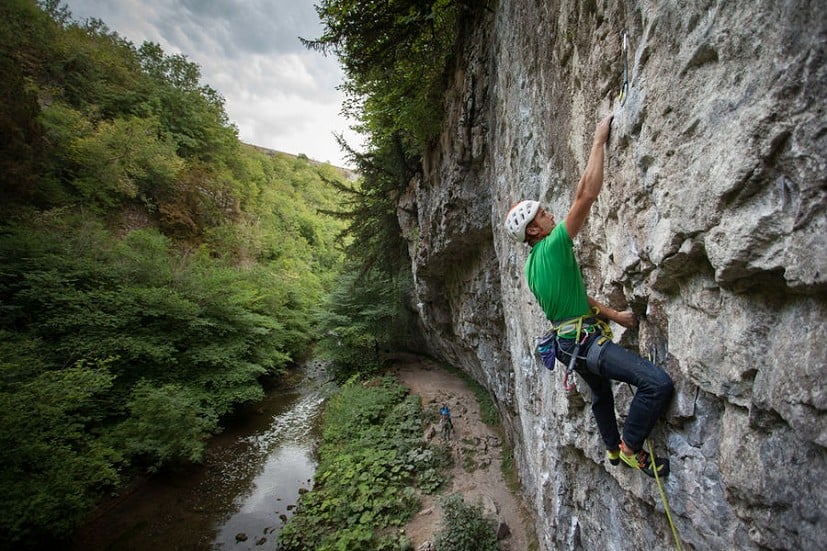
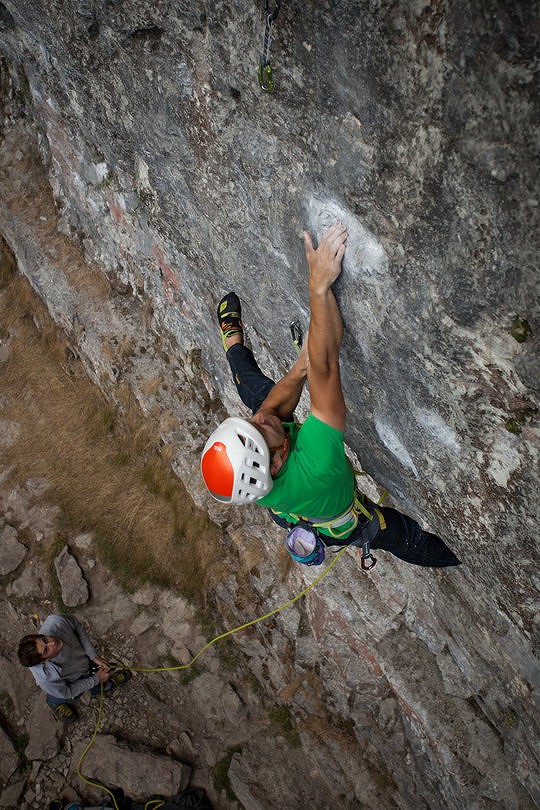
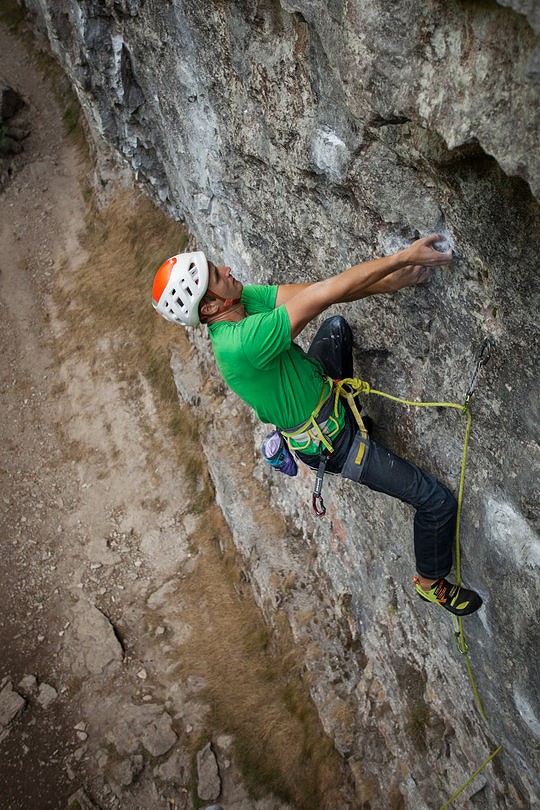
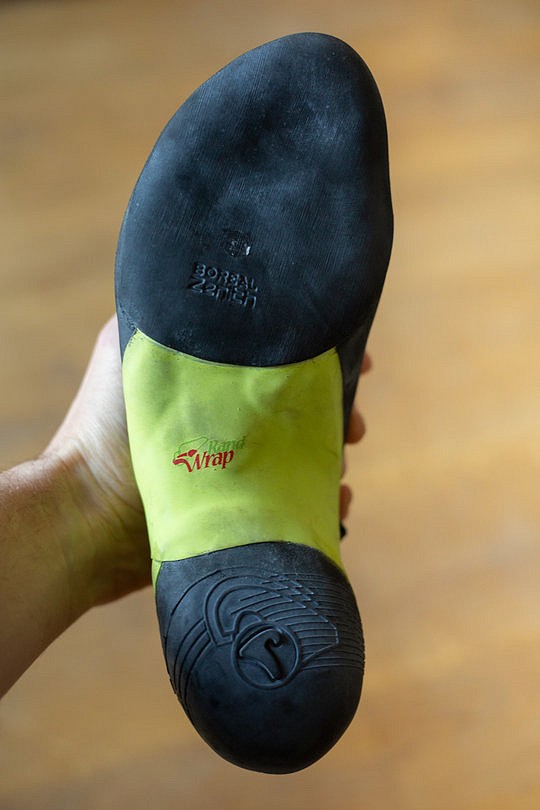


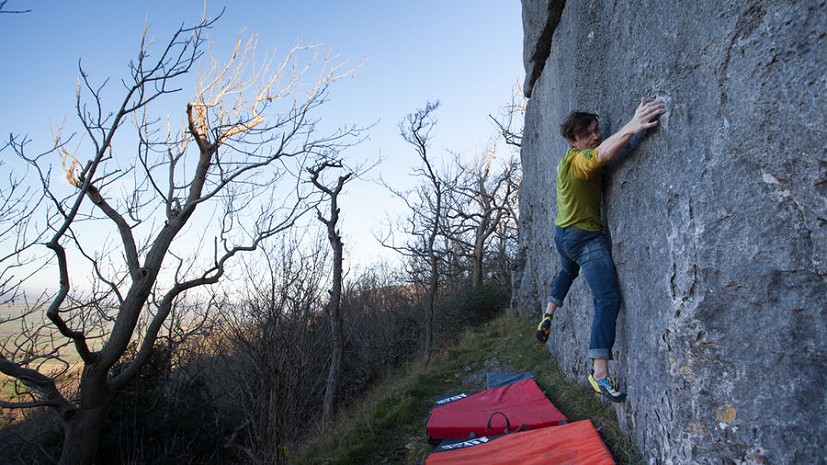
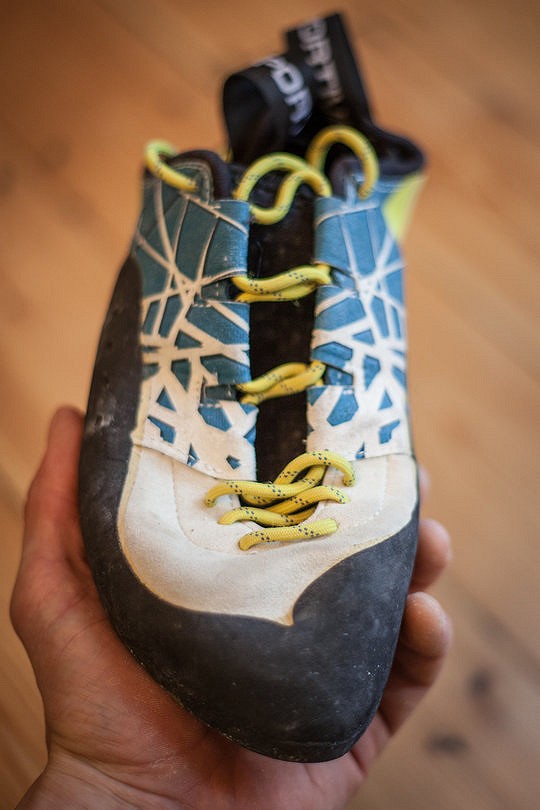
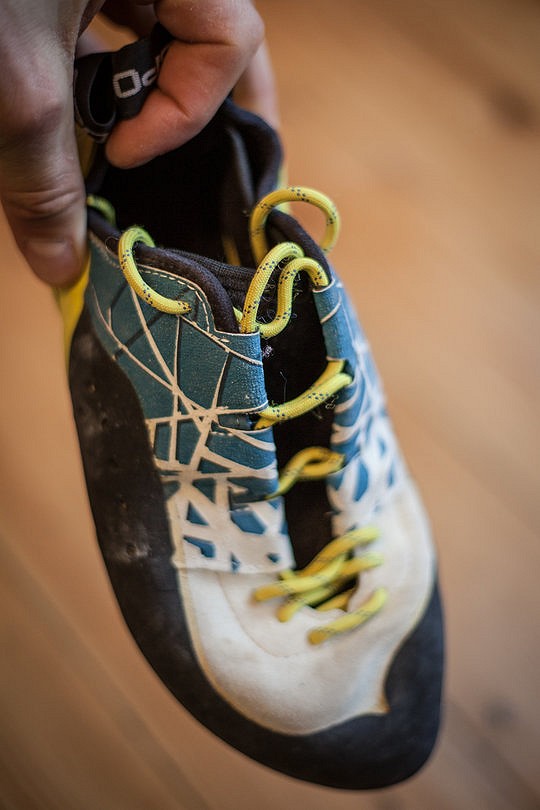

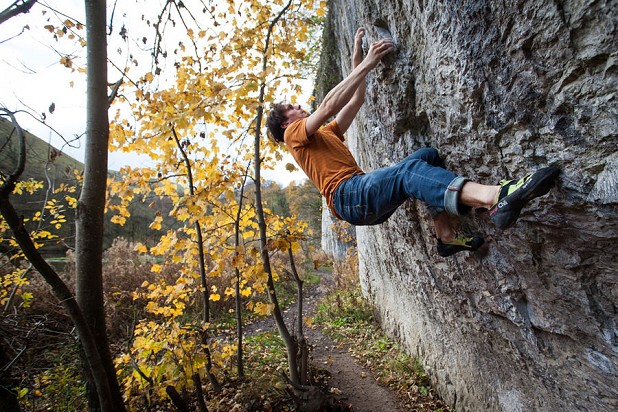
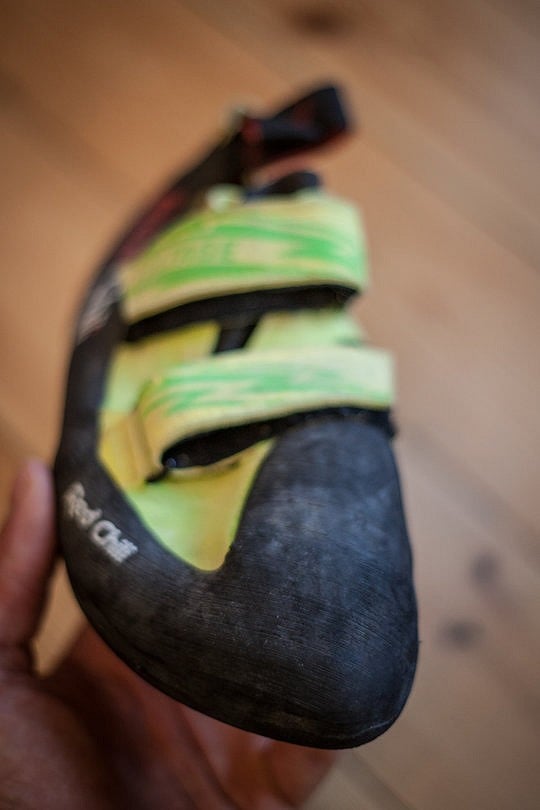
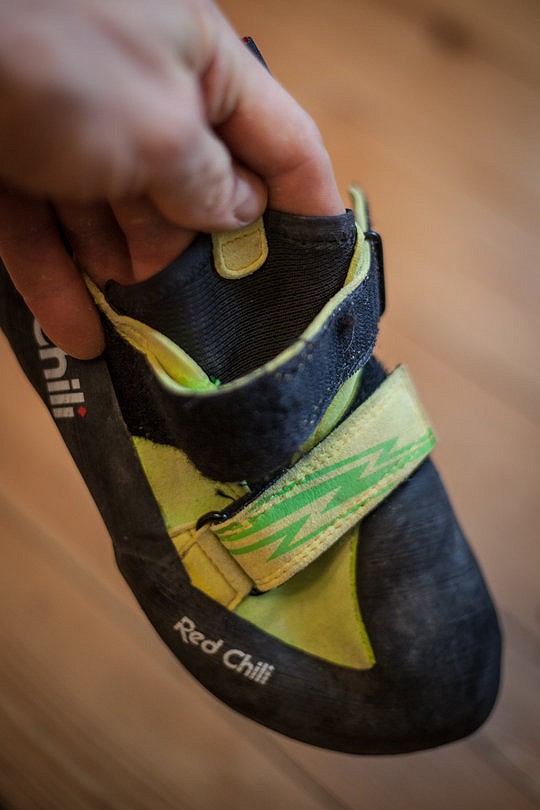
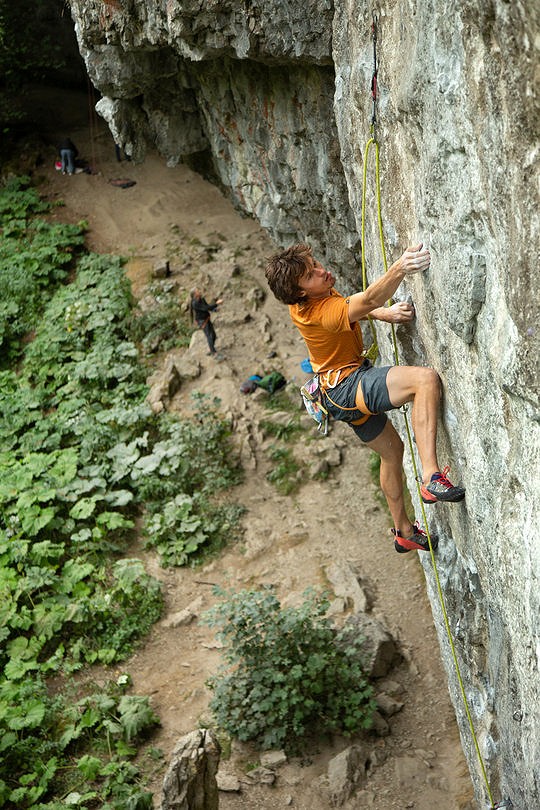
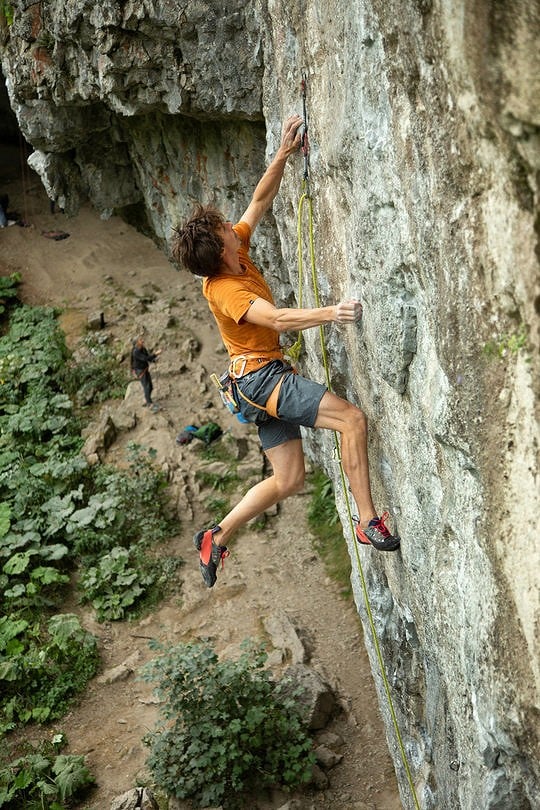
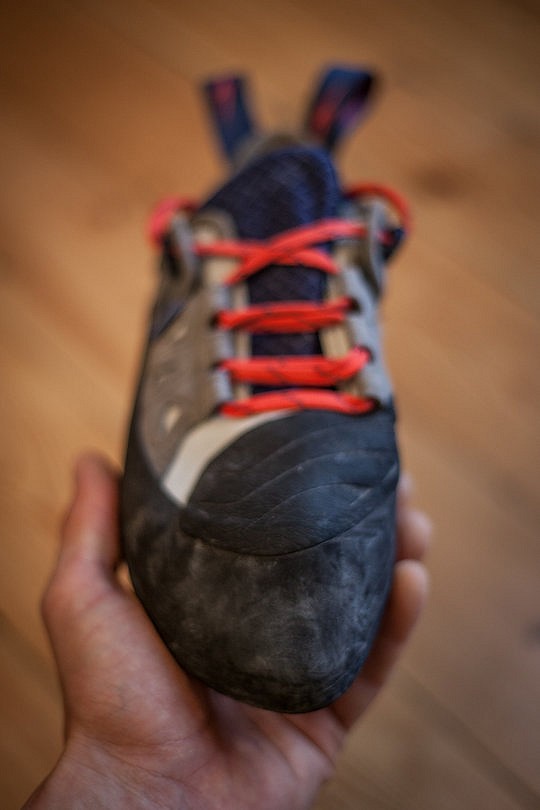

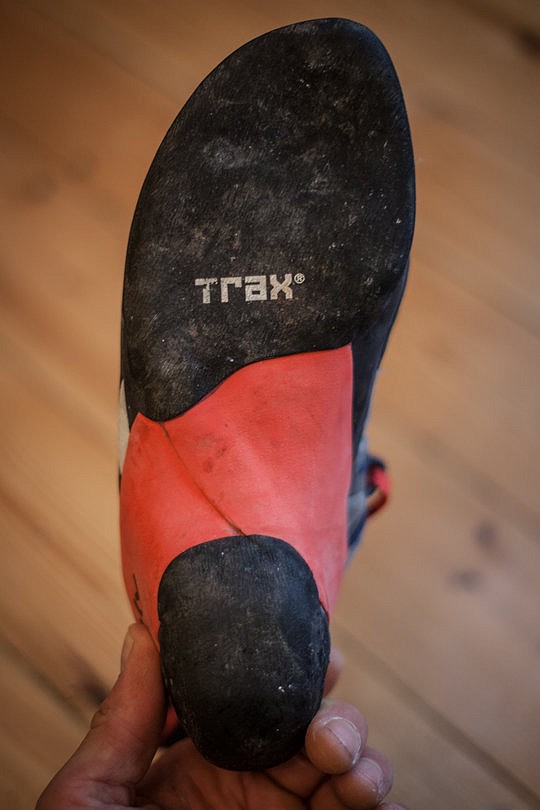
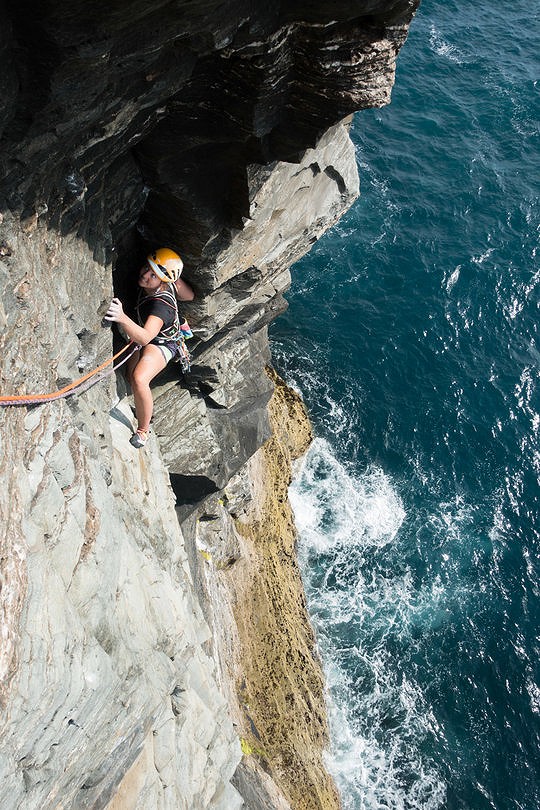
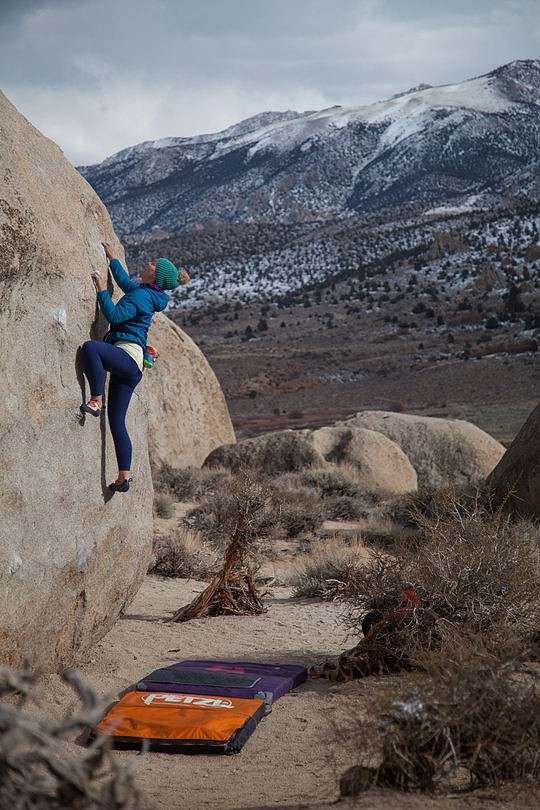

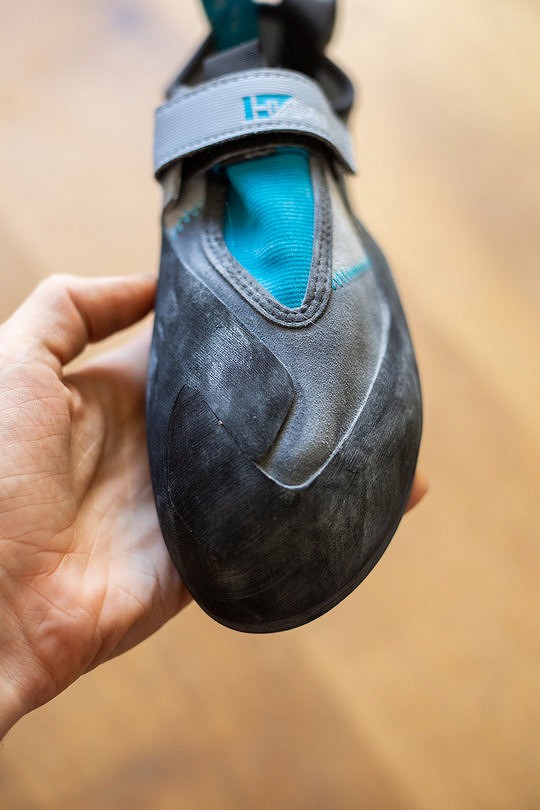
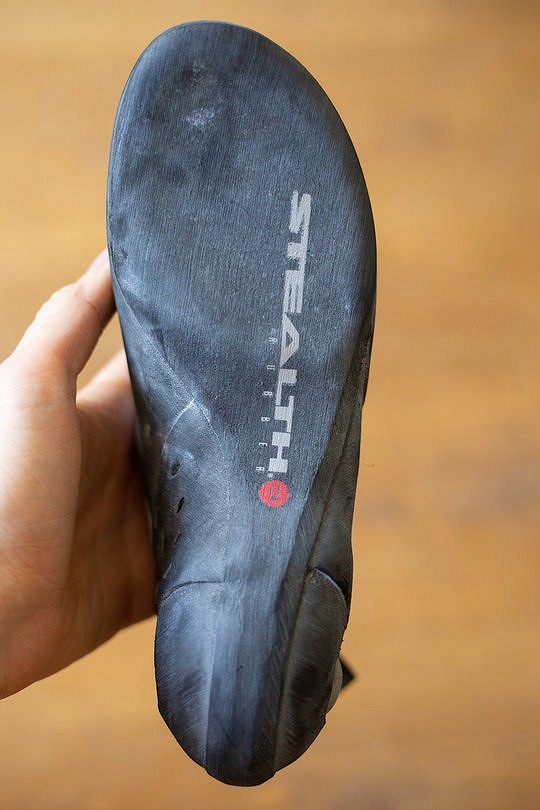
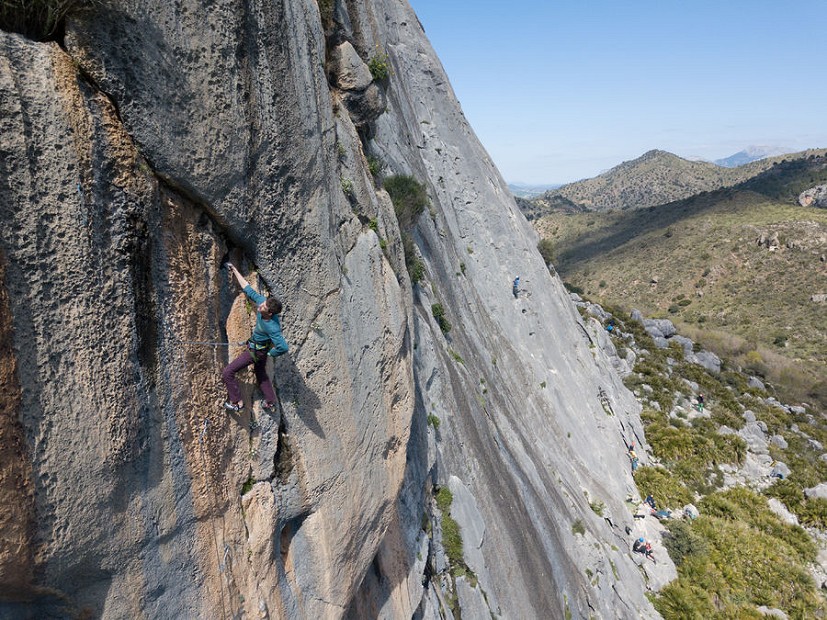
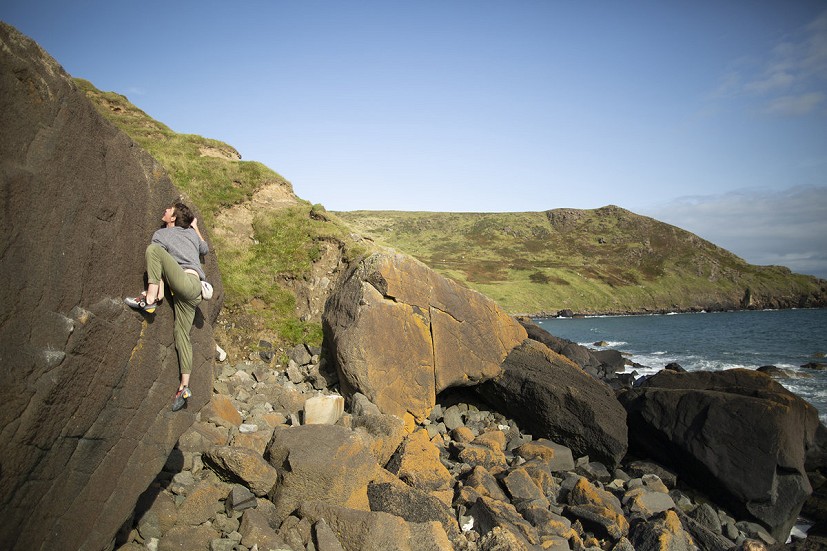
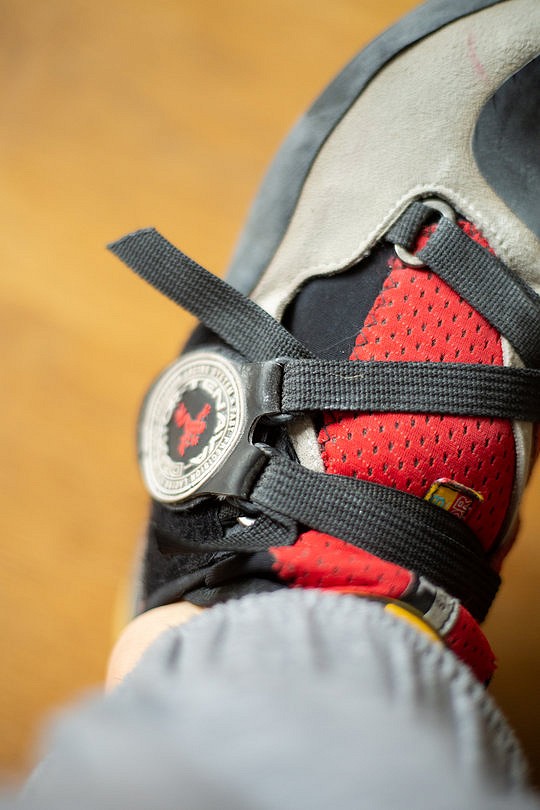

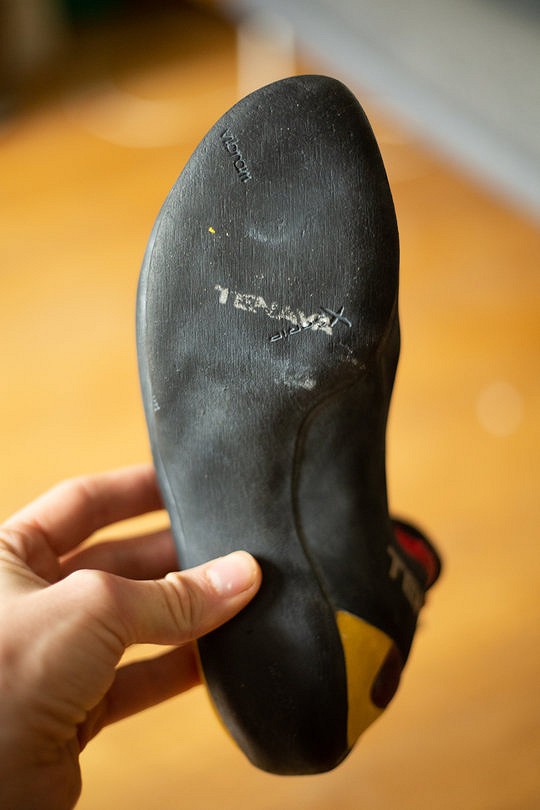
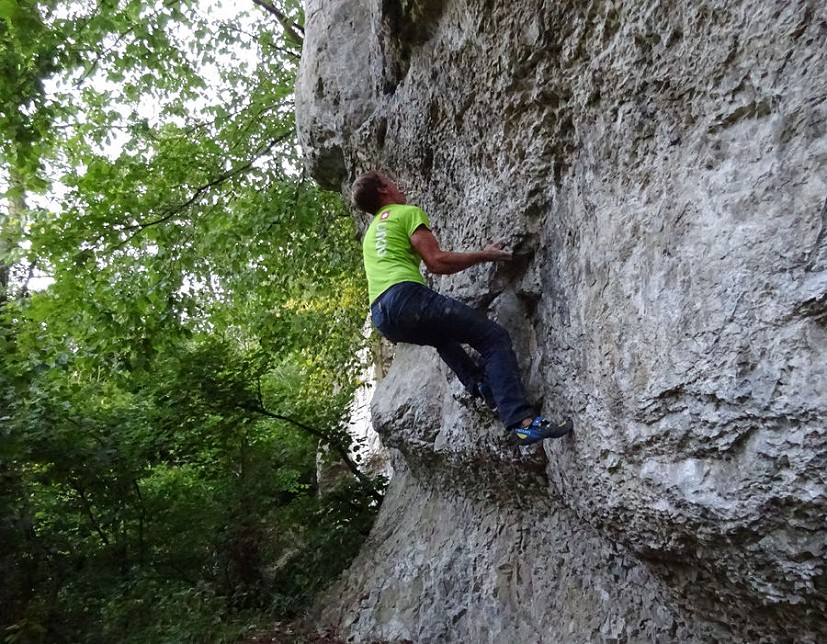
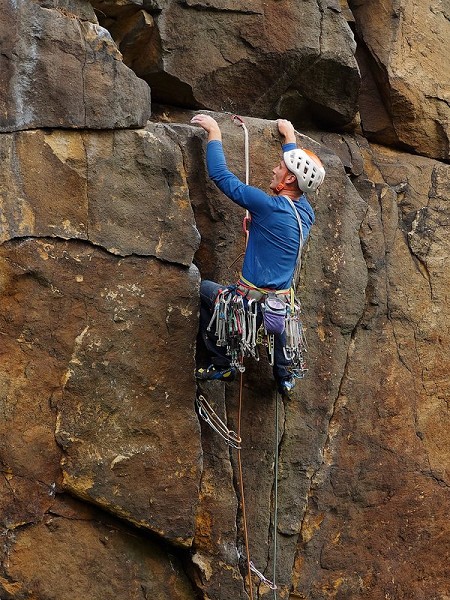

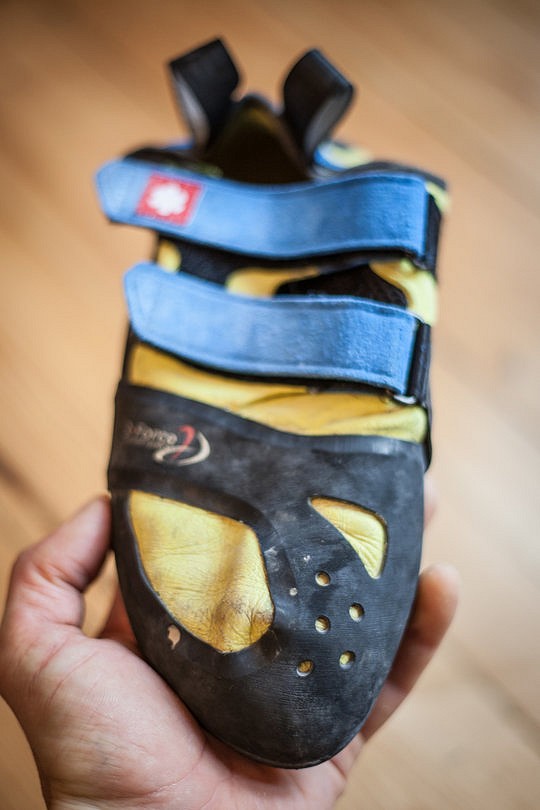
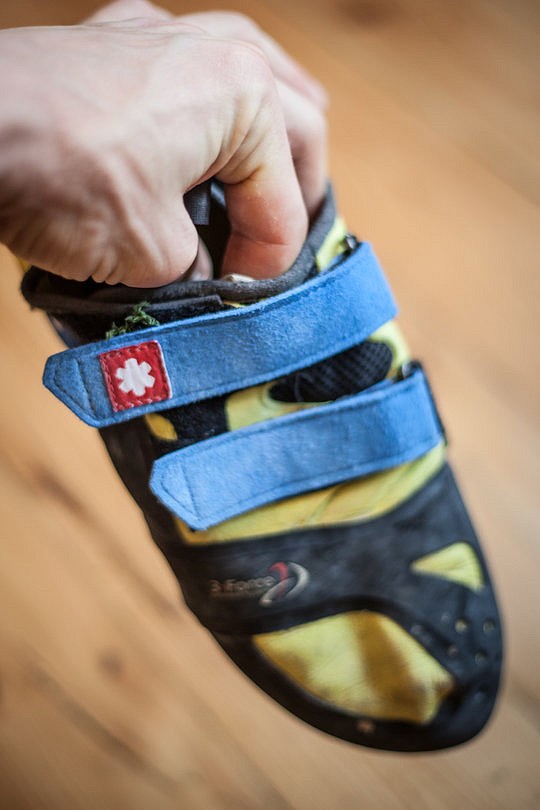

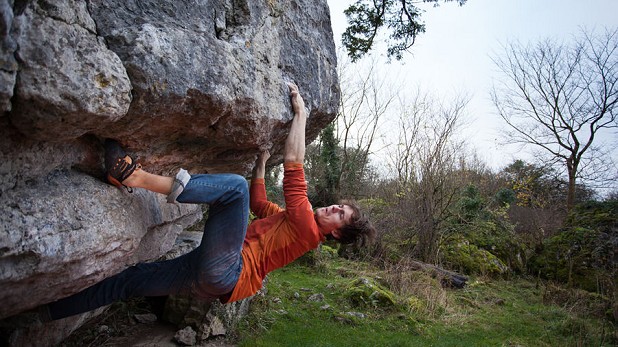
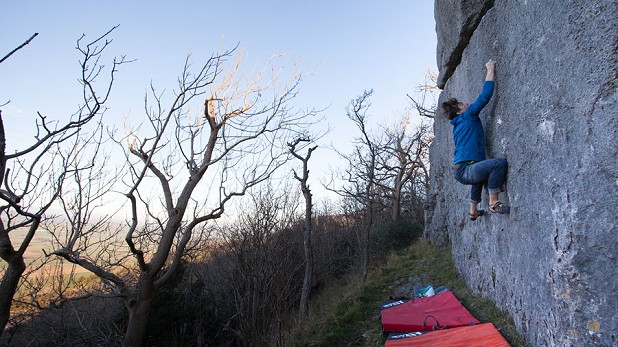

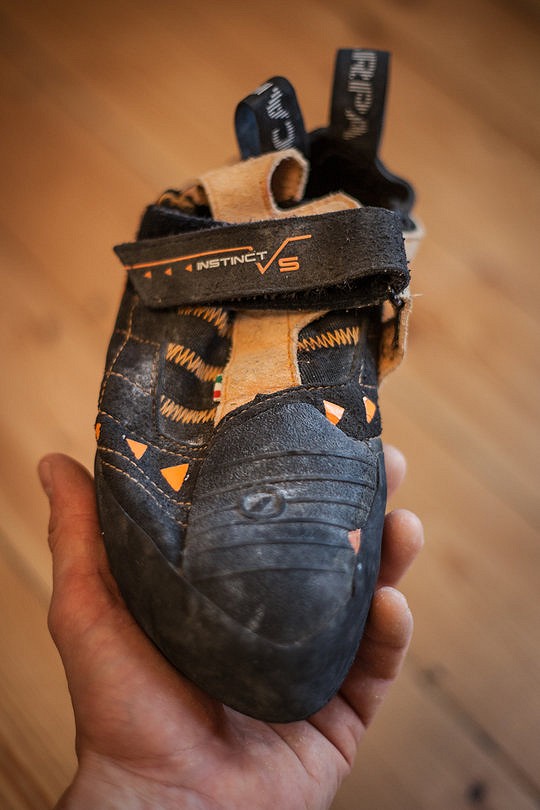
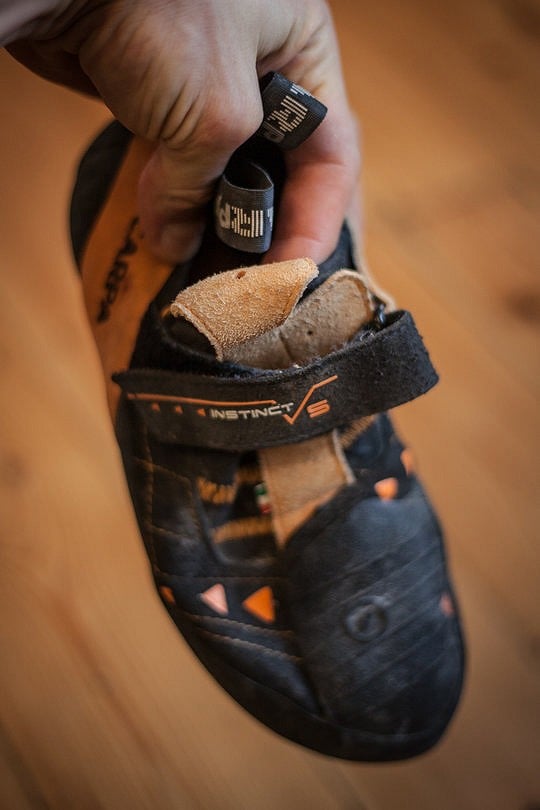
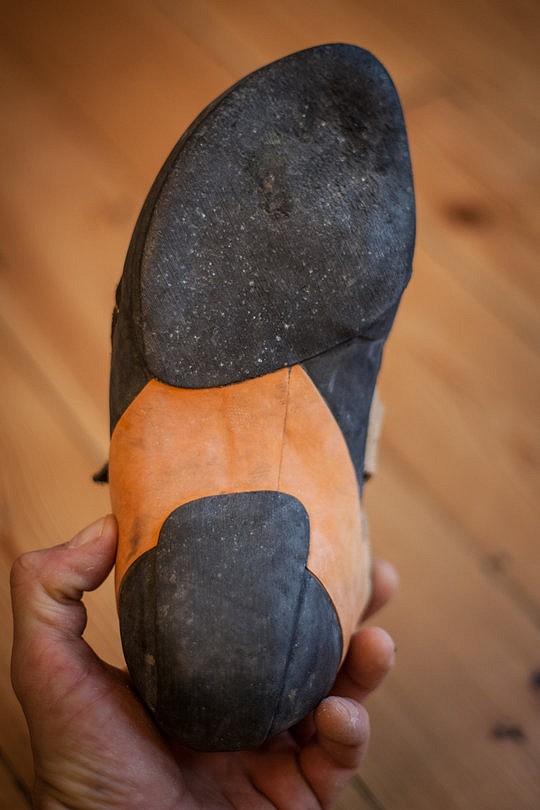
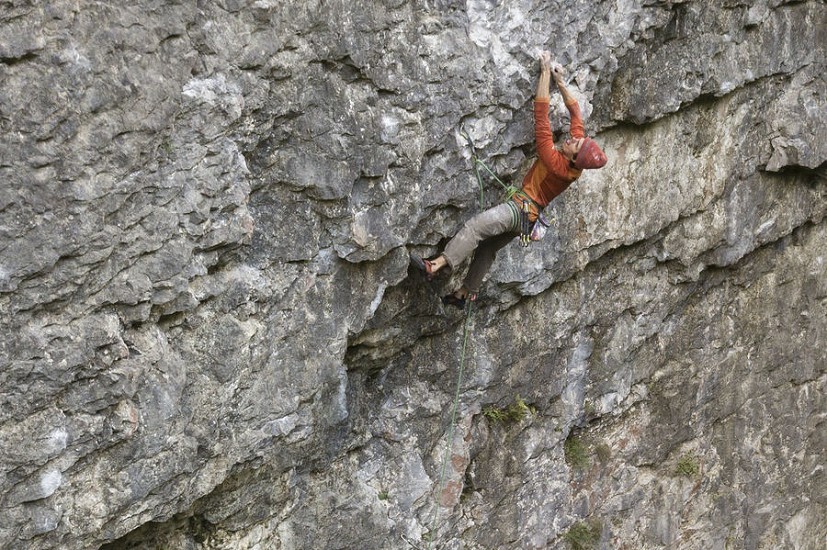

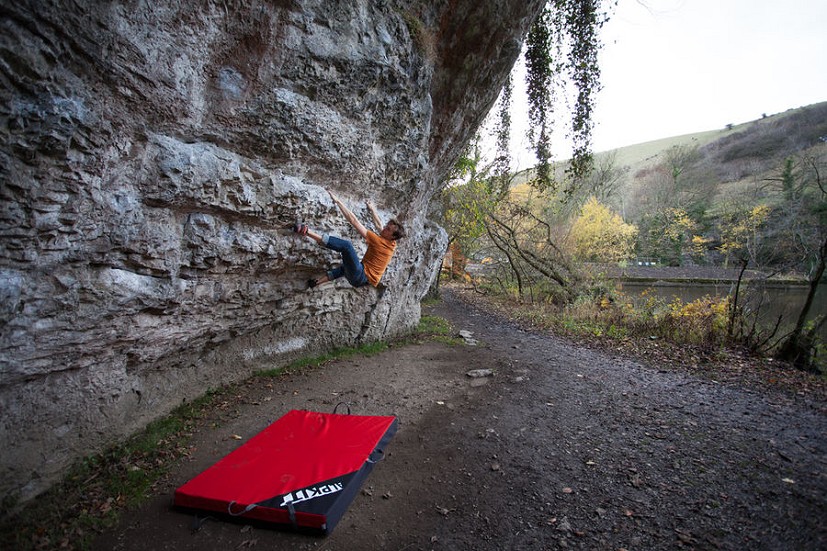
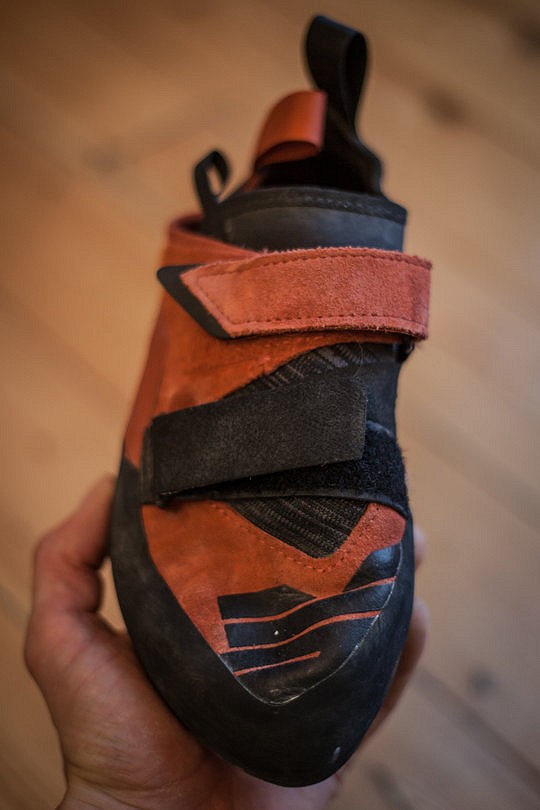
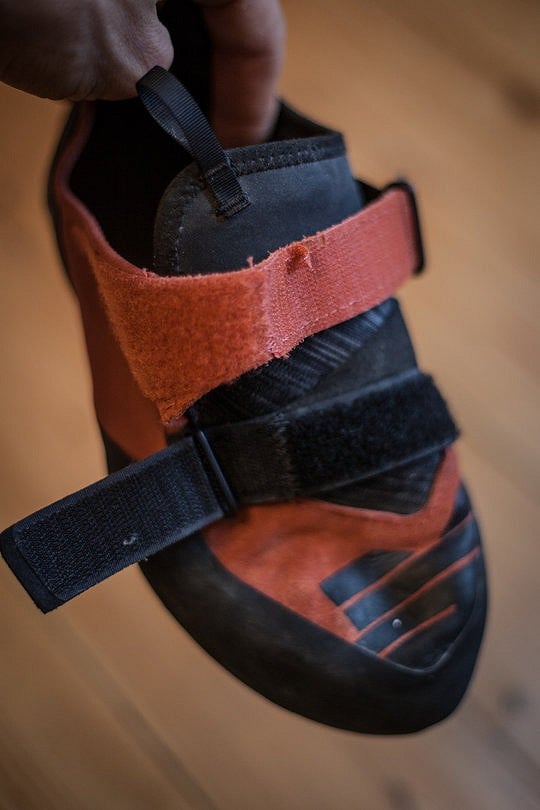
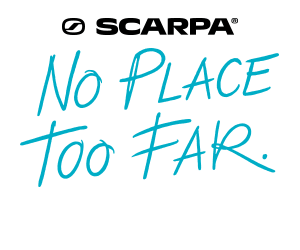
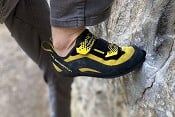
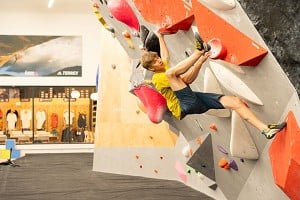
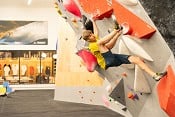
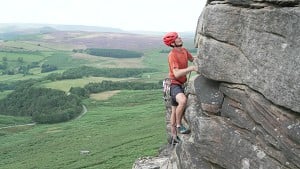

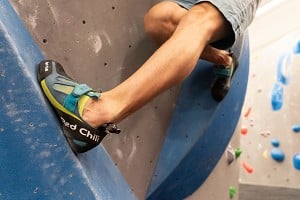
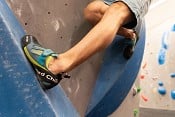
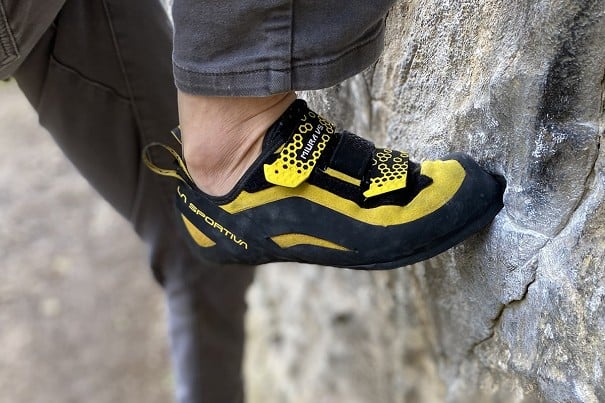
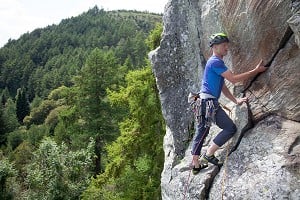
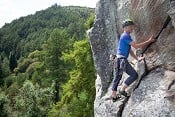

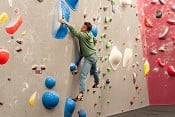
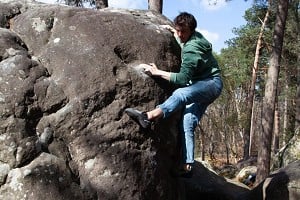
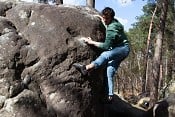

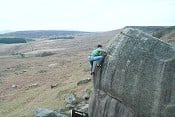
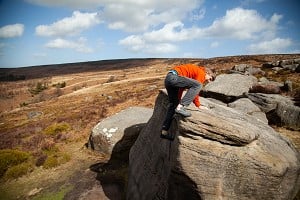

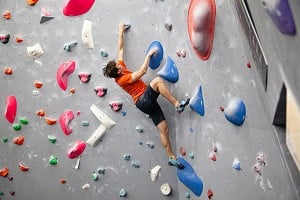

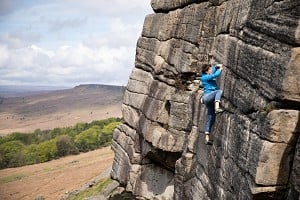



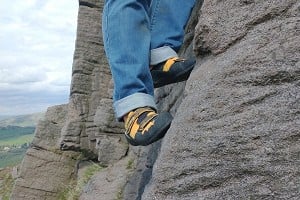
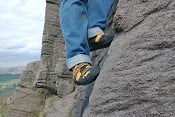

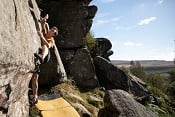

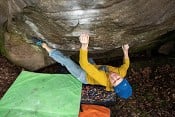
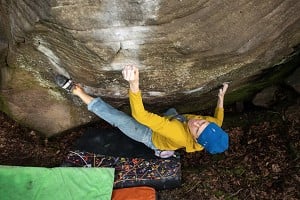
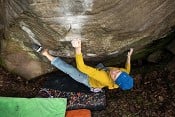
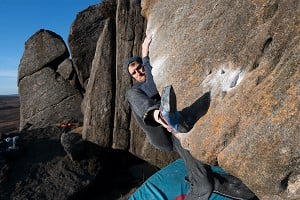
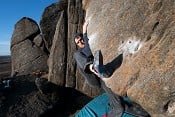
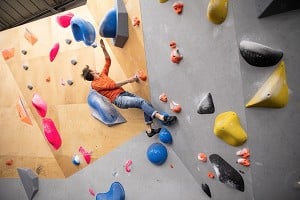

Comments
I'm pretty sure the women's Kataki does come with XSGrip2 instead of XSEdge. So while there might be no difference in fit, it is a bit softer to compensate for the climber's lower weight.
You're quite right, I've updated the article accordingly.
I'd be genuinely interested to hear if lighter climbers feel like they prefer XS Grip for everything, or if Edge still has its place on certain models. For what it's worth I definitely prefer Grip for bouldering, but Edge is far superior for sustained sport/trad edging. Do those smaller/lighter of frame feel otherwise: is Edge too stiff?
Thoughts on the back of a postcard...
I think rock type plays a big part, trad or bouldering on grit I hate edge. It doesn't conform to the texture of the rock enough and I find it skittish. I am definitely at the heavy end of the scale too.
Trad in North Wales for example though edge is great.
Having said that I think I would chose grip on every shoe given a choice, stiff sole with soft rubber, perfect.
Good to see the Hi Angles in there. I love mine and have stock piled a couple of pairs for when Adidas drop them..!
I bought them for sport and bouldering but actually use them for most of my E1 and above trad too. Even fitted tightly they’re super comfy for me.
They do bag out a bit across the front though.
Would it be possible to include a measurement of your reviewer's feet? Because wide, narrow etc are a bit hit and miss. If your feet are 25 cm around the broadest bit and you find the boots narrow, someone with 22cm is going to find them too roomy (and the reverse applies obvs)